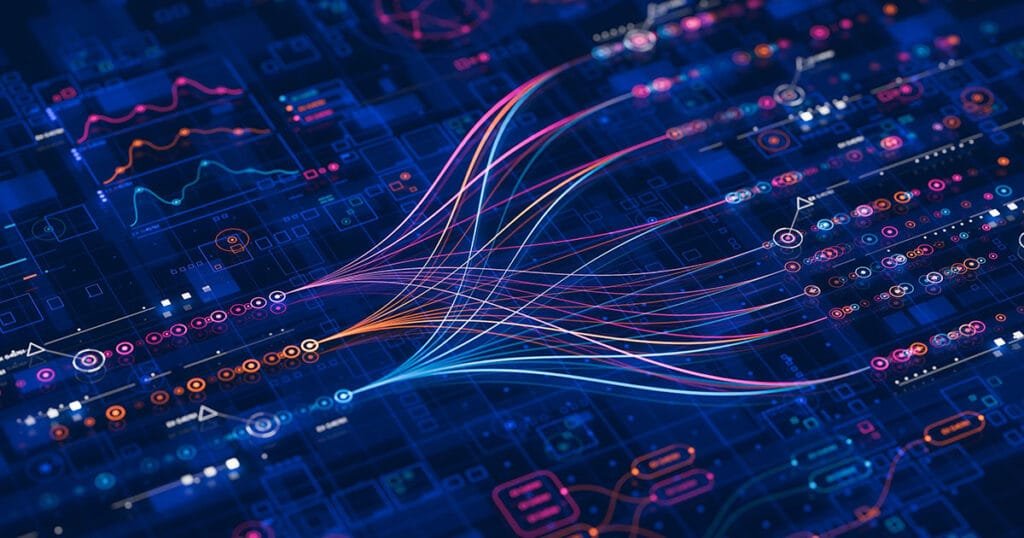When your smartphone unlocks after seeing your face or your virtual assistant responds to your voice commands, you’re experiencing neural networks at work. These remarkable computational systems form the backbone of modern artificial intelligence, enabling machines to interpret visual and auditory information with astonishing accuracy.
From sorting your photo library to transcribing interviews, neural networks have transformed how computers process images and speech. But how exactly do these systems work? This article examines the inner workings of neural networks, with special focus on image recognition and speech processing technologies that power many daily applications.
The Building Blocks of Neural Networks
The Computational Neurons
At their core, neural networks consist of artificial neurons – computational units inspired by brain cells. Unlike biological neurons, these artificial versions are mathematical functions that receive, process, and transmit information.
“These systems aren’t carbon copies of human brains,” notes Dr James Bennett, AI researcher at Oxford University. “They’re mathematical models that borrow certain concepts from neuroscience but operate very differently in practice.”
Each artificial neuron receives multiple input signals, multiplies each by a specific weight value, adds these weighted inputs together with a bias term, and passes the result through an activation function that determines its output. Popular activation functions include ReLU (Rectified Linear Unit), which outputs the input directly if positive and zero otherwise, and Sigmoid, which squashes inputs to values between 0 and 1.
The Network Architecture
Neural networks organise neurons into layers – input layers receive raw data, hidden layers perform intermediate processing, and output layers produce final results. The number and arrangement of these layers define the network’s architecture and capabilities.
Networks with many hidden layers are called “deep” neural networks, giving rise to the term “deep learning.” These multiple layers allow networks to learn increasingly abstract representations of data – from simple edges in early layers to complex objects in later ones.
Wei Li, senior engineer at a leading technology firm, explains: “Each layer transforms the data, extracting more sophisticated features. Early layers might detect edges or corners in an image, while deeper layers recognise complex patterns like eyes or wheels, building toward complete object recognition.”
How Networks Learn
Neural networks aren’t explicitly programmed to recognise specific patterns. Instead, they learn through experience – analysing thousands or millions of examples and gradually adjusting internal parameters to improve performance.
This training process involves:
- Forward propagation – data flows through the network to generate predictions
- Loss calculation – comparing predictions with correct answers to measure error
- Backpropagation – calculating how each neuron contributed to errors
- Parameter updates – adjusting weights and biases to reduce future errors
This optimisation process, typically guided by algorithms like gradient descent, allows networks to progressively minimise mistakes and improve accuracy. The process requires substantial computing resources and large datasets, but produces systems capable of remarkable pattern recognition.
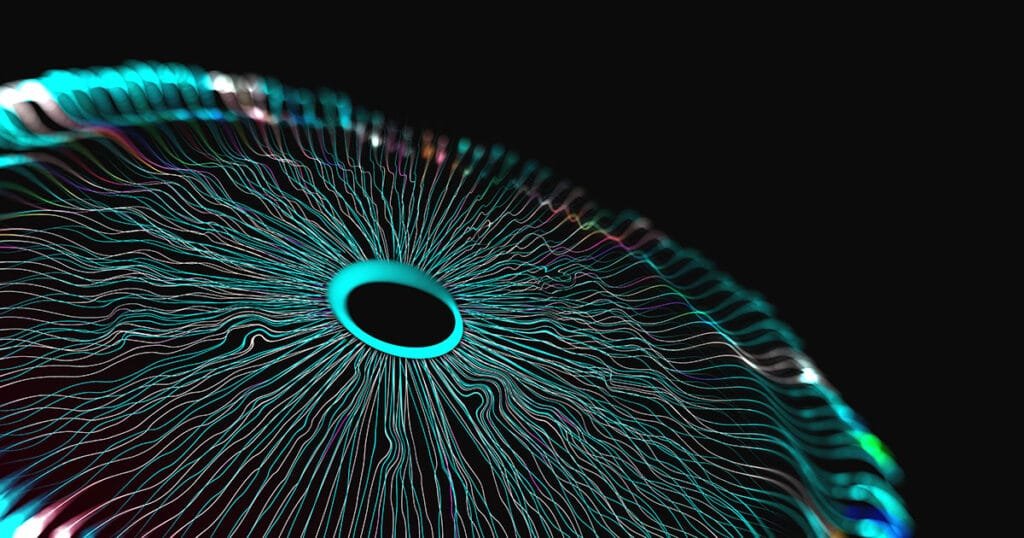
Convolutional Neural Networks: The Eyes of AI
Why Traditional Networks Struggle with Images
Standard neural networks face significant challenges when processing images. A typical photograph contains millions of pixels, and connecting each to every neuron would create an unwieldy number of parameters, making training impractical and results poor.
Additionally, standard networks don’t account for the spatial structure of images – the fact that pixels near each other are typically related. This limitation severely hampers their ability to recognise visual patterns effectively.
The CNN Revolution
Convolutional Neural Networks (CNNs) solve these problems through specialised architecture inspired by the visual cortex. Three key innovations make CNNs remarkably effective for image processing:
Convolutional layers apply filters (small matrices) that scan across the image, detecting specific features wherever they appear. Each filter acts as a pattern detector, responding strongly when its target feature (like a vertical edge or particular texture) is present.
Professor Michelle Roberts, computer vision specialist, explains: “These filters essentially ask the same question repeatedly across different parts of the image: ‘Is there an edge here? A corner here? A specific texture here?’ This approach drastically reduces parameters while maintaining effectiveness.”
Pooling layers reduce the spatial dimensions of the data, typically by taking the maximum or average value within small regions. This downsampling makes the network more efficient and provides a degree of position invariance – the ability to recognise objects regardless of their exact location in the image.
Fully connected layers combine these extracted features for final classification decisions. By the time data reaches these layers, the network has built a rich hierarchical representation of the image content.
CNNs in Practice
The impact of CNNs on image recognition has been revolutionary. Modern systems achieve over 95% accuracy on challenging benchmarks and can distinguish between thousands of object categories. This technology powers numerous applications:
- Photo organisation tools that automatically tag people, places, and objects
- Medical imaging systems that help identify tumours, fractures, and other abnormalities
- Security systems using facial recognition
- Quality control in manufacturing to detect defects
- Agricultural monitoring for crop health and disease identification
Research continues to improve CNN architectures, with variants like ResNet introducing “skip connections” to facilitate training deeper networks, and MobileNet offering efficient designs for mobile devices.
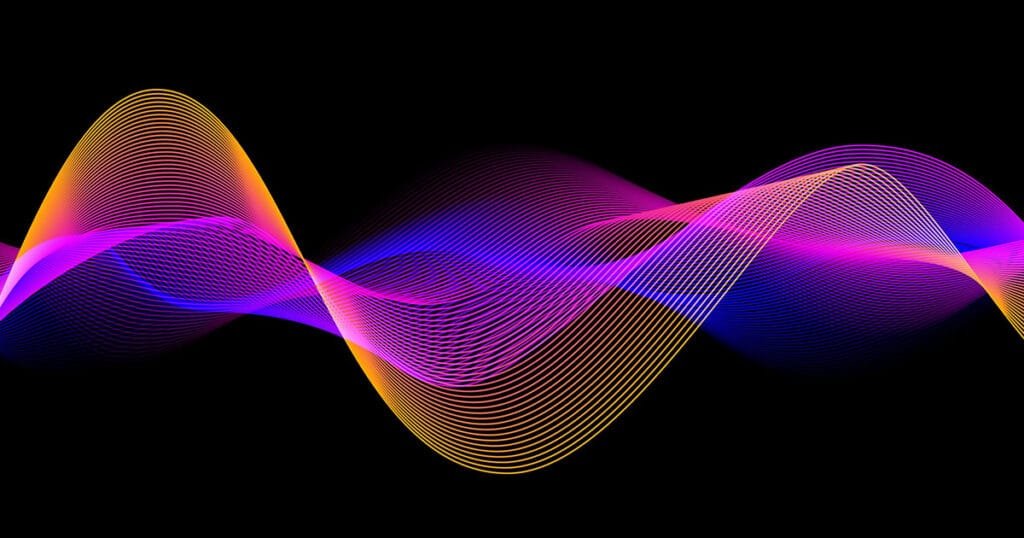
Neural Networks for Speech Recognition
The Challenges of Understanding Speech
Speech recognition presents unique challenges compared to image analysis. Speech is sequential and time-dependent, varies enormously between speakers, and can be corrupted by background noise or unclear pronunciation.
“Human speech has remarkable variability,” notes Dr Emma Barnes, speech technology expert. “The same word sounds different depending on who says it, how quickly they speak, their accent, and countless other factors. Teaching machines to handle this variation requires specialised approaches.”
Converting Sound to Features
Speech recognition systems begin by transforming audio signals into more manageable representations. While traditional systems relied heavily on Mel-Frequency Cepstral Coefficients (MFCCs) – features designed to capture phonetically important characteristics while discarding irrelevant information – modern systems often work directly with spectrograms (visual representations of sound frequencies over time) or even raw waveforms.
This feature extraction creates a sequence of acoustic representations that neural networks can process to identify phonetic patterns.
Recurrent Neural Networks and Memory
The sequential nature of speech requires networks that can maintain information across time steps. Recurrent Neural Networks (RNNs) address this by incorporating feedback loops, allowing information to persist from one step to the next.
Basic RNNs struggle with longer sequences due to the “vanishing gradient problem,” where important information from early in a sequence gets progressively diluted. Long Short-Term Memory networks (LSTMs) and Gated Recurrent Units (GRUs) solve this through specialised memory mechanisms:
- LSTM networks use cell states and three gates (input, forget, and output) to control information flow, allowing relevant context to persist over long sequences.
- GRU networks offer a simplified alternative with reset and update gates, often achieving similar performance with less computational overhead.
Thomas Harris, speech AI developer, explains: “These memory mechanisms help networks maintain context. When processing the word ‘their,’ the network remembers previous words to distinguish whether you meant ‘their,’ ‘there,’ or ‘they’re’ – something impossible without this contextual memory.”
The Transformer Revolution
More recently, Transformer models have revolutionised sequence processing tasks, including speech recognition. Instead of processing sequences step by step like RNNs, Transformers use a mechanism called “self-attention” to directly model relationships between all elements in a sequence, regardless of their distance from each other.
This parallel processing approach offers two major advantages:
- More effective modelling of long-range dependencies in speech
- Significantly faster training through parallelisation
Modern speech recognition systems often combine CNN layers (to process spectral features) with Transformer layers (to model temporal relationships), creating hybrid architectures that achieve remarkable accuracy.
End-to-End Speech Recognition
Traditional speech recognition systems used separate components for acoustic modelling, pronunciation modelling, and language modelling. Modern end-to-end systems replace this complex pipeline with a single neural network trained to directly map audio to text.
This simplified approach has achieved impressive results, powering virtual assistants, transcription services, and accessibility tools with ever-increasing accuracy. The best systems now approach human-level performance in good acoustic conditions, though challenges remain with noisy environments, strong accents, and specialised vocabulary.
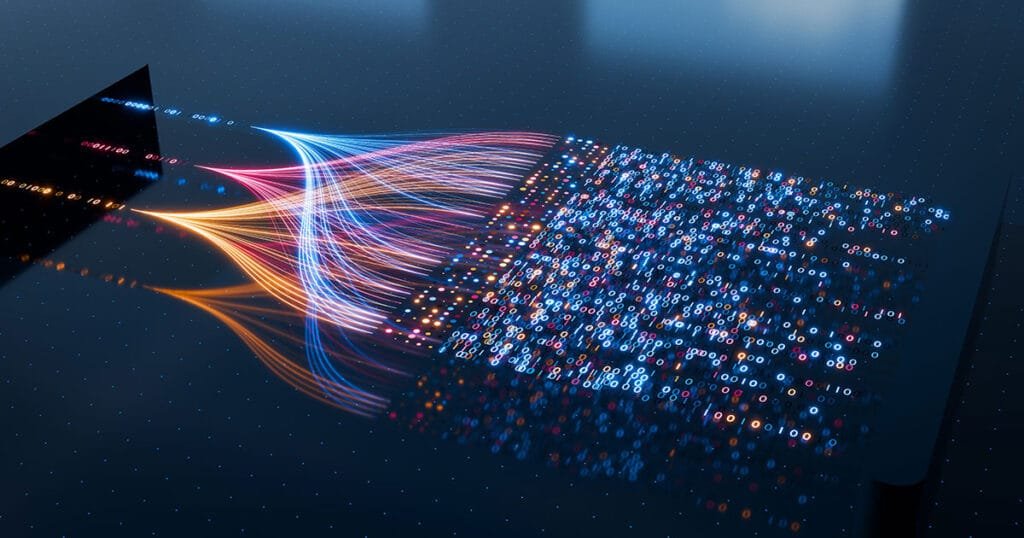
Comparing Network Architectures
Different neural network architectures excel at different tasks, each with unique strengths and limitations:
| Network Type | Best For | Strengths | Limitations |
| CNN | Images, spatial data | Efficient at detecting patterns in grid-like data | Less effective for sequential information |
| RNN/LSTM | Sequential data, text, speech | Maintains memory of previous inputs | Can be slow to train and use |
| Transformer | Complex language tasks, modern speech systems | Processes sequences in parallel, handles long-range patterns | Computationally expensive, data-hungry |
The choice between architectures depends on specific requirements including data type, computational resources, and performance needs. Many practical systems combine multiple architectures to leverage their complementary strengths.
Real-World Applications
Image Recognition in Daily Life
Neural networks for image recognition have become ubiquitous in modern life:
- Smartphone cameras that automatically adjust settings based on scene recognition
- Social media platforms that suggest tags for friends in photos
- Augmented reality apps that identify objects in your environment
- Retail applications that allow visual search for products
- Autonomous vehicles that identify road features, signs, and obstacles
Dr Sarah Wilson, computer vision researcher, notes: “These systems now recognise objects with remarkable accuracy, but they’re not infallible. They can struggle with unusual lighting, partially obscured objects, or items shown from unusual angles – areas where human vision still excels.”
Speech Technologies Transforming Communication
Speech recognition and processing technologies continue to transform how we interact with devices and services:
- Virtual assistants handling increasingly complex voice commands
- Real-time transcription services for meetings and lectures
- Voice-controlled smart home systems
- Language learning applications with pronunciation feedback
- Accessibility tools for hearing-impaired individuals
- Customer service automation through voice response systems
These applications demonstrate how neural networks have made machines significantly better at understanding human communication, though perfect comprehension in all circumstances remains an ongoing challenge.
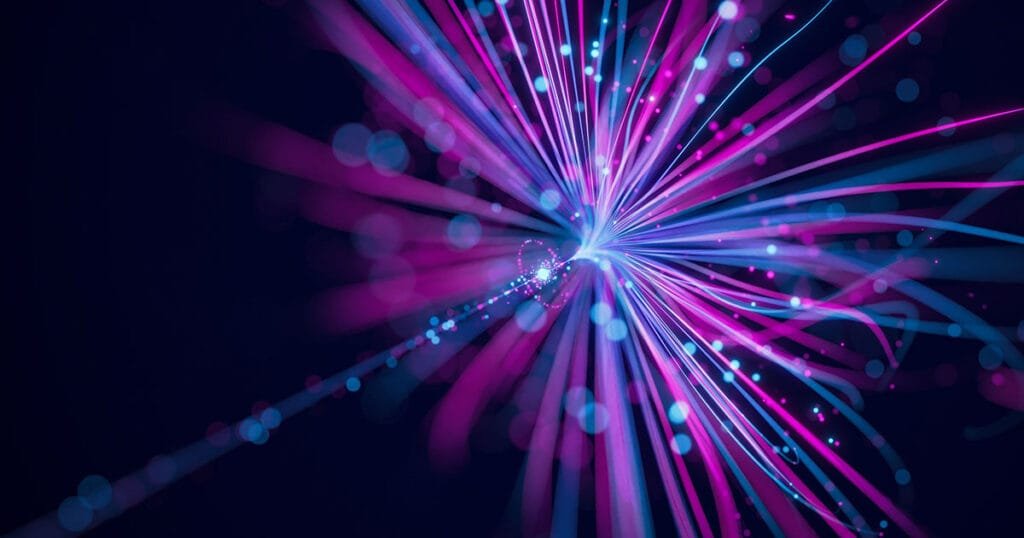
The Future of Neural Networks
Research continues to advance neural network capabilities at a rapid pace. Current trends include:
- More efficient architectures require less data and computing power
- Multimodal systems that combine vision, speech, and language understanding
- Self-supervised learning approaches that reduce dependence on labelled data
- Hardware specifically designed to accelerate neural network operations
- Techniques to make networks more robust against unusual or adversarial inputs
While impressive, today’s neural networks still face limitations. They require extensive computing resources, struggle to explain their decisions, and lack true understanding of the concepts they process. Nevertheless, they represent remarkable progress in artificial intelligence and continue to expand the boundaries of what machines can accomplish.
Frequently Asked Questions About Neural Networks
Traditional programs follow explicit rules written by programmers. Neural networks learn patterns from data, adjusting internal parameters through experience rather than following hardcoded instructions. This approach allows them to handle complex patterns difficult to capture with explicit rules.
Requirements vary by task complexity. Simple image classifiers might need thousands of examples, while advanced speech and language models require millions. Transfer learning -adapting pre-trained networks to new tasks can significantly reduce these requirements.
No. Despite some conceptual inspiration from brains, neural networks process information very differently from humans. They excel at specific pattern recognition tasks but lack understanding, consciousness, or general intelligence. They’re mathematical models optimised for particular domains, not artificial minds.
On standard benchmarks, state-of-the-art systems achieve 95%+ accuracy across thousands of categories. However, performance varies with image quality and context. These systems can still make surprising errors, particularly with unusual examples or situations not represented in their training data.
These systems must distinguish between acoustically similar options like “recognise speech” and “wreck a nice beach.” They use contextual information from language models to help disambiguate, but when multiple interpretations are plausible or audio quality is poor, errors can occur.
Supervised learning trains networks on labelled examples (inputs paired with correct outputs). Unsupervised learning works with unlabeled data, identifying patterns without explicit guidance. Most current image and speech recognition systems primarily use supervised learning, though they increasingly incorporate unsupervised pre-training methods.
External Resources for Further Learning
Stanford University’s CS231n: Deep Learning for Computer Vision – Stanford’s renowned course materials on deep learning, focusing on computer vision. Includes detailed notes and assignments covering neural networks, CNNs, RNNs, and Transformers, freely available online.
MIT Introduction to Deep Learning (6.S191) – An introductory bootcamp from MIT covering the fundamentals of deep learning algorithms and their applications in areas like computer vision and natural language processing. Lecture slides, videos, and practical software labs are available online.
Google AI Education / Machine Learning Resources – A collection of free learning materials from Google, including courses like the Machine Learning Crash Course, foundational guides, and tools covering AI fundamentals, machine learning concepts, responsible AI, and practical applications.

